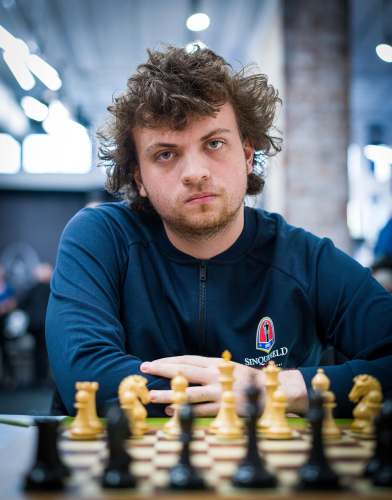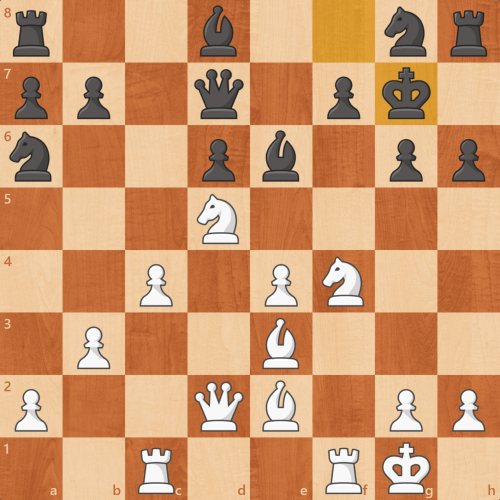
Hans Niemann at the 2022 Sinquefield Cup.
Chess.com released their Hans Niemann Report. In the report, the Chess.com Fair Play Team concludes Hans Niemann “has likely cheated in more than 100 online chess games, including several prize money events.”
Fair Play Team’s Report
The report includes several tables and charts of statistical evidence, a description of Chess.com’s cheat detection system, along with numerous emails between the Fair Play Team and Hans. In his email responses to questions asked by the Fair Play Team, Hans confesses to cheating online.
Regarding Hans’ game against Magnus Carlsen at the 2022 Sinquefield Cup, the Fair Play Team states, “In our view, this game and the surrounding behaviors and explanations are bizarre… However, we are currently unaware of any evidence that Hans cheated in this game, and we do not advocate for any conclusions regarding cheating being made based on this one encounter.”
In our view, [the Niemann – Carlsen Sinquefield Cup] game and the surrounding behaviors and explanations are bizarre.
The report stresses Chess.com’s cheat detection system was built to detect cheating in online play, not over the board (OTB) play. Nonetheless, regarding Niemann’s rapidly rising FIDE rating, the Fair Play team states, “his results are statistically extraordinary.” With regard to OTB cheat detection, the report states, “Chess.com has historically not been involved in OTB or classical chess fair play decisions, as we do not run OTB or classical chess events… We have shared our findings with FIDE and will cooperate with any investigation or requests they pursue. It is our belief that OTB event organizers should be taking much stronger precautions against cheating by all players to ensure fair play.”
I posted the following comment on the TalkChess forum.
My Thoughts (Posted on TalkChess)
My previous TalkChess forum post (Fri Sep 09, 2022 12:20am UTC) and MadChess blog post:
[Hans] seems to be playing a character: the wild-eyed, misunderstood genius who cannot suffer fools and is impatient with the unimaginative, bourgeois chess establishment.
Whether this is based on…
- Derogatory comments Hans endured while stuck in the 2400s (not smart enough, not talented enough, etc) that inspired him to seek revenge by doubling-down his efforts, leading to a legitimate rise to the elite level, or…
- Hans realizing there’s no audience for the bad-boy, trash-talking villain in the 2400s; that no one cares unless the villain rises to the top and knocks the princes and kings off their thrones; so Hans decided to leverage computer assistance to get himself on the stage.
… is unclear to me at this time.
I read the entire Hans Niemann Report. I am leaning towards explanation #2. The evidence of Hans cheating online is damning. As a consequence, I question the man’s motivations. Does he want to improve his skill or does he want attention and adulation? On the other hand, the over the board (OTB) evidence demonstrates serious abnormalities but is not conclusive.
I just can’t get past the man’s cocky attitude, snarky interviews, and rage and bravado. I can’t reconcile it with his incoherent post-game analysis. Especially when compared to Vassily Ivanchuk’s famous post-game analysis of an entire game completely from memory with no visual board to prompt him. I’m skeptical that Hans’ zest for put-downs and reticence to discuss details of his OTB thought process are simply an odd personality quirk or a manifestation of some-can-do-but-can’t-explain.
It’s looking more and more likely he simply shifted arenas for his devious conquest from online to OTB. Perhaps for vengeance, fame, money, or a taste of each. Or maybe just for the amusement of punking us all, satisfying some psychological need known only to provocateurs, as I suggested with my earlier reference to Andy Kaufman.
Having achieved a respectable degree of proficiency professionally and in my chess engine hobby, I have come to appreciate the hard-won knowledge earned by a long slog up the learning curve. I respect expert opinion. So I find it exceedingly difficult to toss aside the concerns of Magnus Carlsen, Ian Nepomniachtchi, Fabiano Caruana, Hikaru Nakamura, and other high-caliber players who have stated or insinuated there’s something suspect with Hans’ chess. It’s erratic, disjointed, alien.
I realize what I’ve expressed here is subjective opinion. While I spend most of my professional time and energy on more objective matters of software development, I live in a world of human beings. In my experience it’s personally and professionally valuable to form opinions of people’s character. I- we all- must navigate their idiosyncrasies, disguised motivations, veils of personal mythology, calculations of political expediency, etc.
I’d stay the hell away from a character like Hans Niemann.
Follow the Story
Follow discussion of the report here: Carlsen Withdrawal After Loss to Niemann.



 I work as a Software Architect at an insurance company. We're building a modern tech stack in the cloud using C#, Azure, ASP.NET Core, Angular, TypeScript, etc.
I work as a Software Architect at an insurance company. We're building a modern tech stack in the cloud using C#, Azure, ASP.NET Core, Angular, TypeScript, etc.